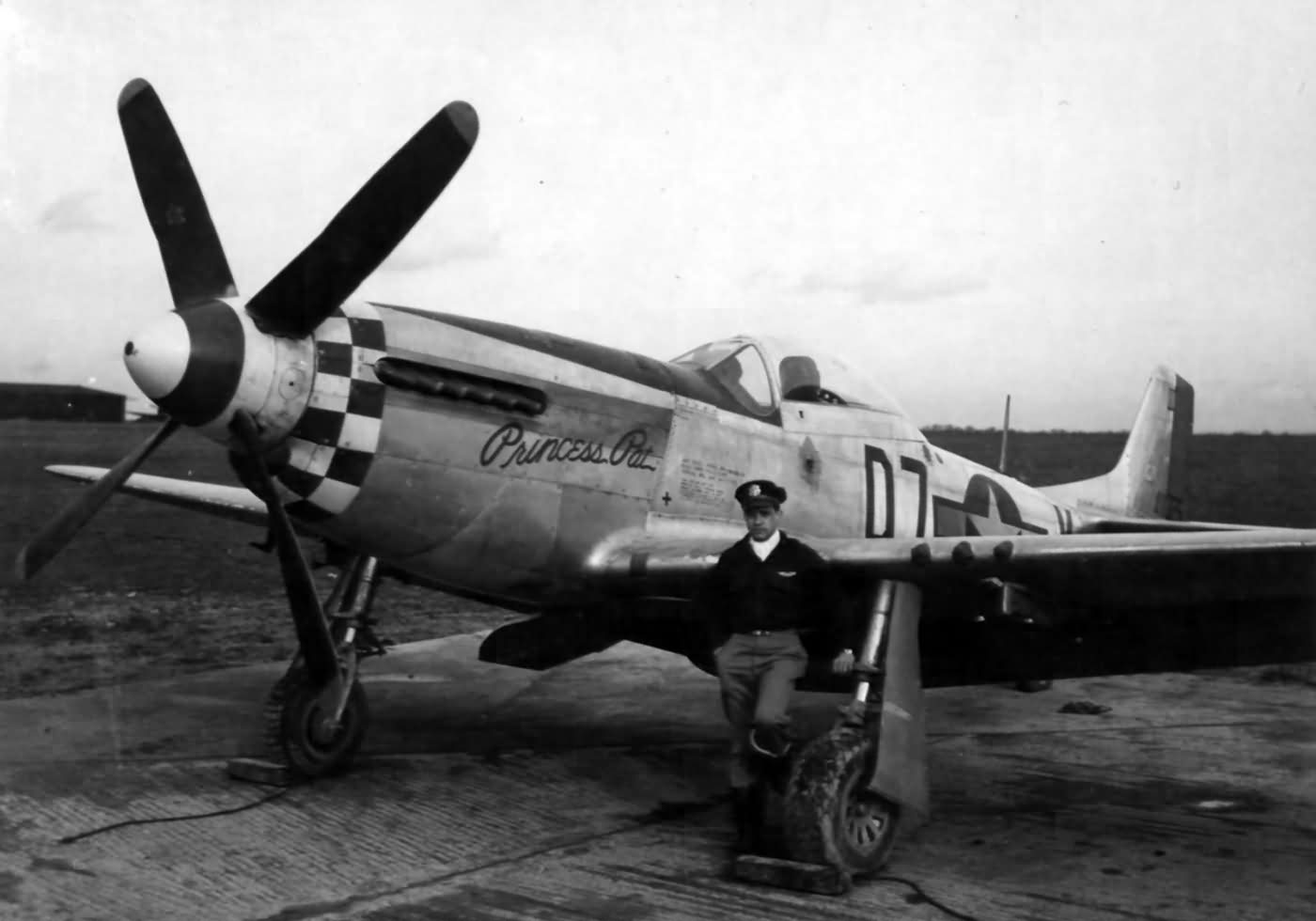The 339th Fighter Group was an integral unit of the U.S. Army Air Forces during World War II, primarily flying P-51 Mustangs. Here’s a detailed look at the group’s assignments, aircraft, and achievements:
Assignments:
- Eighth Air Force: Assigned on 4 April 1944.
- 66th Fighter Wing (VIII Fighter Command): From 4 April 1944.
- 66th Fighter Wing (3rd Bombardment Division): From 15 September 1944.
- 66th Fighter Wing (3rd Air Division): From 1 January 1945.
Component Squadrons:
- 503rd Fighter Squadron
- 504th Fighter Squadron
- 505th Fighter Squadron
Combat Aircraft:
- P-51 B (from blocks 10-NA)
- P-51 C (from block 1-NT)
- P-51 D
- P-51 K
Station:
- Fowlmere: From 5 April 1944 to approx. 10 October 1945.
Group Commanding Officers (COs):
- Col John B. Henry Jr.: 17 August 1943 – 13 April 1945.
- Lt Col William C. Clark: 14 April 1945 – unknown.
- (Acting COs):
- Lt Col Harold W. Scruggs: 1 October 1944 – 24 December 1944.
- Lt Col Carl T. Goldenberg: 24 December 1944 – 28 December 1944.
Combat Missions:
- First Mission: 30 April 1944.
- Last Mission: 21 April 1945.
- Total Missions: 264.
- Aircraft Missing in Action (MIA): 97.
- Enemy Aircraft Claims: 239 in air, 440 on ground.
Major Awards:
- Distinguished Unit Citation:
- 10-11 September 1944: For the destruction of 58 enemy aircraft on escort missions.
Claims to Fame:
- Highest claims of air and ground enemy aircraft victories within one year.
- Tested the Berger G-suit for the 8th Air Force.
- Only group to claim over 100 ground strafing victories on two separate occasions:
- 105 victories on 4 April 1945.
- 118 victories on 11 April 1945.
History:
- Activated as the 339th Bombardment Group (BG) at Hunter Field, Georgia, on 10 August 1942.
- Originally trained with A-24 and A-25 dive-bombers at Drew Field, Florida, in February 1943.
- Shifted to a fighter role and re-designated as a Fighter-Bomber Group (FBG) on 15 August 1943.
- Re-equipped with P-39 Airacobras and continued training at Rice Field, California, from 16 September 1943.
- Overseas Movement: Began on 9 March 1944. The group sailed from New York on the Stirling Castle on 22 March 1944, arriving in Liverpool on 4 April 1944.
- First P-51 Mustangs arrived on 12 April 1944.
Aircraft Markings and Camouflage:
- P-51 B/C/D/K Mustangs (April 1944 – September 1945):
- Initial Markings: Natural metal finish with black type identity stripes.
- Nose Markings: The spinner was divided into three equal portions, painted white/red/white. A 12-inch nose band was later repainted with two encircling rows of red and white checks, each 6 inches square.
- Squadron Codes:
- D7 for the 503rd Fighter Squadron.
- 5Q for the 504th Fighter Squadron.
- 6N for the 505th Fighter Squadron.
- Rudder Colors: Introduced in late November 1944 for additional squadron recognition:
- 503rd Fighter Squadron: Red rudder.
- 504th Fighter Squadron: Green rudder (medium camouflage green).
- 505th Fighter Squadron: Rudder remained unpainted.
- Training Aircraft Markings: OTU aircraft mostly had barred letters for identification. By March 1945, these aircraft had their rudders painted yellow, regardless of squadron assignment.
Subsequent History:
- Returned to the United States in October 1945.
- Aircraft were sent to depots for disposal in August/September 1945.
- Many personnel were transferred, and the remainder sailed on the Queen Mary on 11 October 1945, arriving in New York on 16 October 1945.
- The group was inactivated at Camp Kilmer, NJ, on 18 October 1945.
